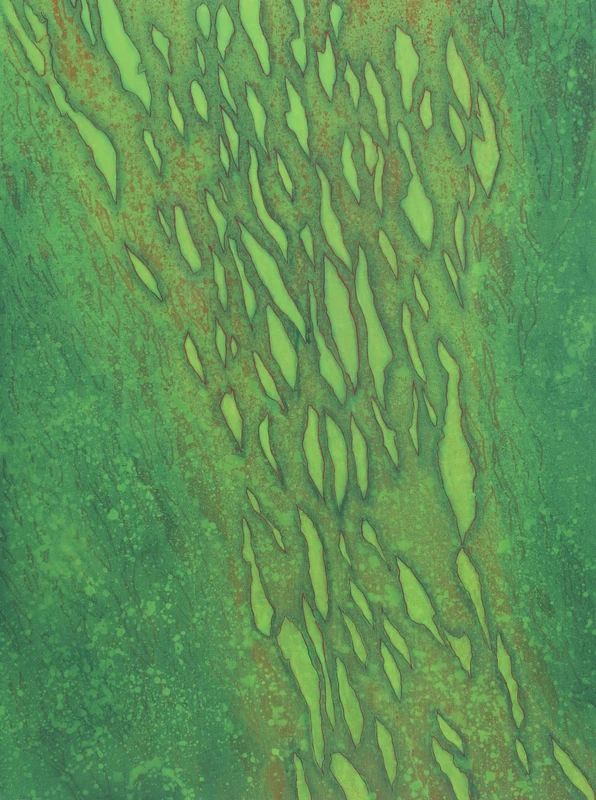Roger Kite: Nature's Traces
4 Oct-25 Nov 2023
PV 4 Oct 2023, 6-8pm


Hugh Stoddart writes:
Life seemed to stop for millions of us when Covid hit the world and particularly for people involved in creative work, projects collapsed, plans were cancelled, we had to hunker down and find resources in ourselves, even find new paths to take. Metaphorical paths: we were shut away in rooms.
In Roger Kite’s case, a residency in Ireland was snatched from him four days before he was due to go. Then what? In the conversation we had in preparation for this essay, he referred to the choice he made at that difficult time as a “lifesaver.” He began to make very small work; he made a large number of these, each about A5 size and he calls them Miniatures. Not only did these small pieces in a way express a sense of confinement and isolation, they served as well to defy that pain: he photographed them and sent them out to friends.
They functioned like the flags bearing information flown between ships in the days before radio.
How is Roger informing us? Or rather, what is he telling us in his work? He refers to “natural forms” as his source of inspiration. He begins with observation: of trees, landscape, roots, patterns in water, leaves, even lightning. He thinks of himself, however, as someone making abstract art; he will not be satisfied until the source has been left behind, until, as he puts it, “the work has gone beyond from where it began, and in an unpredictable way.” He is aware that those who look at his paintings will seek resonances and see connections with the world that surrounds us: there are things to be found in it, but we must put the time in! He may spend a long time on each piece, frequently overpainting what he has done. He is required then to react to what remains visible from earlier marks: what will he render invisible and what will be allowed to remain, if only as a ghost of what was there before?
Either way, there will be more changes. There is an accumulation going on, and this gives his paintings, paradoxically, a kind of weight despite the glowing colour and their seeming lightness, their radiance. They are not framed, the colour flows round to the visible edges, which gives them a slightly three-dimensional quality. There is a formal quality too: proportions remain the same though the size may vary. Overall, the paintings remain quite small: they don’t, in Roger’s view, need to be any bigger. Colour, though, is crucial, and he restricts his palette because, as he says, he wants the colours to “sing.”
He is interested in fractals, in patterns that repeat forever. The detail is repeated in the overall. Roger spends a lot of his time in Italy, and he cited to me a Romanesco cauliflower where the florets reflect the overall shape of the plant and very small components of each floret do the same. Fractal veg: a humble analogy, but none the worse for that. Such things are surely an inspiration.
As we grow older, linear ways of thinking become unwise and egocentricity can seem foolish. Even with the most optimistic prognostication, we know less time remains ahead than the time that has passed and gone. Yet we cling to that linear notion: it fuels our ambitions and gives us a way to measure satisfaction with what we achieve. It is unwise, though, because it can bring sadness as the fact of our impermanence becomes inescapable. Roger confronts this: he rises to the challenge. We humans are not in his paintings except as components of a vast existence, an endless cycle of growth and decay and renewal and change.
He is interested in the natural sciences. He quotes from the Law of Conservation of Energy, which states that energy cannot be created and cannot be destroyed. But it can be diverted, it can be used, it is in us, for a time at least. Most importantly, I find it in Roger Kite’s work. There is an energy captured in it.